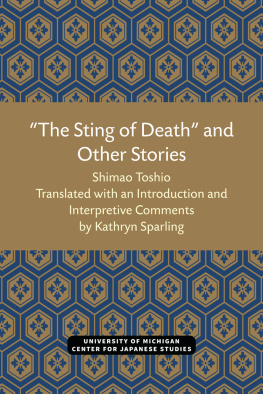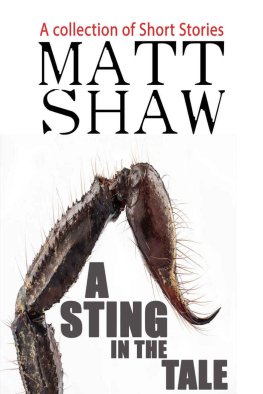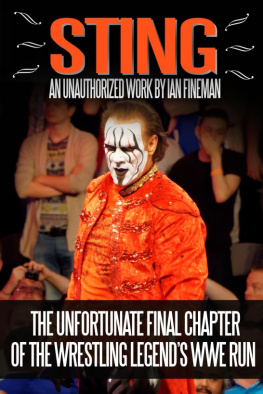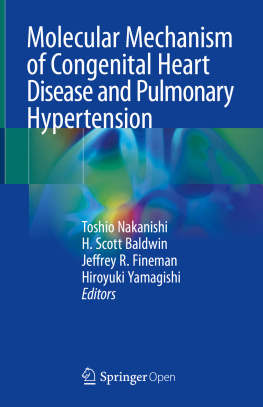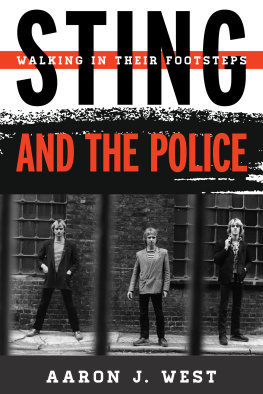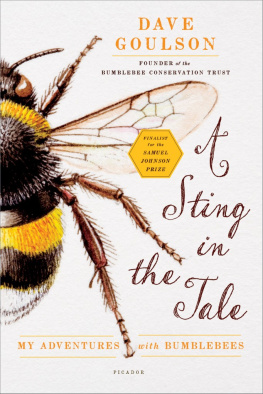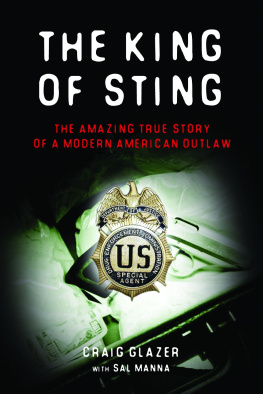Shimao Toshio - “The Sting Of Death” And Other Stories
Here you can read online Shimao Toshio - “The Sting Of Death” And Other Stories full text of the book (entire story) in english for free. Download pdf and epub, get meaning, cover and reviews about this ebook. year: 2020, publisher: University of Michigan Center for Japanese Studies, genre: Detective and thriller. Description of the work, (preface) as well as reviews are available. Best literature library LitArk.com created for fans of good reading and offers a wide selection of genres:
Romance novel
Science fiction
Adventure
Detective
Science
History
Home and family
Prose
Art
Politics
Computer
Non-fiction
Religion
Business
Children
Humor
Choose a favorite category and find really read worthwhile books. Enjoy immersion in the world of imagination, feel the emotions of the characters or learn something new for yourself, make an fascinating discovery.
- Book:“The Sting Of Death” And Other Stories
- Author:
- Publisher:University of Michigan Center for Japanese Studies
- Genre:
- Year:2020
- Rating:4 / 5
- Favourites:Add to favourites
- Your mark:
- 80
- 1
- 2
- 3
- 4
- 5
“The Sting Of Death” And Other Stories: summary, description and annotation
We offer to read an annotation, description, summary or preface (depends on what the author of the book "“The Sting Of Death” And Other Stories" wrote himself). If you haven't found the necessary information about the book — write in the comments, we will try to find it.
“The Sting Of Death” And Other Stories — read online for free the complete book (whole text) full work
Below is the text of the book, divided by pages. System saving the place of the last page read, allows you to conveniently read the book "“The Sting Of Death” And Other Stories" online for free, without having to search again every time where you left off. Put a bookmark, and you can go to the page where you finished reading at any time.
Font size:
Interval:
Bookmark:

THE UNIVERSITY OF MICHIGAN
CENTER FOR JAPANESE STUDIES
MICHIGAN PAPERS IN JAPANESE STUDIES NO. 12
MICHIGAN PAPERS IN JAPANESE STUDIES
No. 1. Political Leadership in Contemporary Japan, edited by Terry Edward MacDougall.
No. 2. Parties, Candidates and Voters in Japan: Six Quantitative Studies, edited by John Creighton Campbell.
No. 3. The Japanese Automobile Industry: Model and Challenge for the Future?, edited by Robert E. Cole.
No. 4. Survey of Japanese Collections in the United States, 1979-1980, by Naomi Fukuda.
No. 5. Culture and Religion in Japanese-American Relations: Essays on Uchimura Kanz, 1861-1930, edited by Ray A. Moore.
No. 6. Sukerokus Double Identity: The Dramatic Structure of Edo Kabuki, by Barbara E. Thornbury.
No. 7. Industry at the Crossroads, edited by Robert E. Cole.
No. 8. Treelike: The Poetry of Kinoshita Yji, translated by Robert Epp.
No. 9. The New Religions of Japan: A Bibliography of Western-Language Materials, by H. Byron Earhart.
No. 10. Automobiles and the Future: Competition, Cooperation, and Change, edited by Robert E. Cole.
No. 11. Collective Decision Making in Rural Japan, by Robert C. Marshall.
No. 12. The Sting of Death and Other Stories by Shimao Toshio, translated by Kathryn Sparling.
No. 13. The American Automobile Industry: Rebirth or Requiem, edited by Robert E. Cole.
THE STING OF DEATH AND OTHER STORIES
BY SHIMAO TOSHIO
translated, with introduction and interpretive comments by Kathryn Sparling
Ann Arbor
Center for Japanese Studies
The University of Michigan
1985
Open access edition funded by the National Endowment for the Humanities/Andrew W. Mellon Foundation Humanities Open Book Program.
ISBN 0-939512-18-1
Copyright 1985
Center for Japanese Studies
The University of Michigan
108 Lane Hall
Ann Arbor, MI 48109
Cover design from a painting by Eric Ernst
Library of Congress Cataloging in Publication Data
Shimao, Toshio, 1917
The sting of death and other stories.
(Michigan papers in Japanese studies; no. 12)
Translation of six stories.
1. Shimao, Toshio, 1917- -Translations, English. I.
Sparling, Kathryn, 1946- . II. Title.
III. Series.
PL838.H57A27 1985 895.635 83-26313
ISBN 0-939512-18-1
Printed in the United States of America
ISBN 978-0-939512-18-8 (paper)
ISBN 978-0-472-88000-3 (ebook)
ISBN 978-0-472-90201-9 (open access)
The text of this book is licensed under a Creative Commons Attribution-NonCommercial-NoDerivatives 4.0 International License: https://creativecommons.org/licenses/by-nc-nd/4.0/
For Susanna Finley Rapp
Contents
The stories of Shimao Toshio were first called to my attention in 1972 by a Japanese friend and classmate who was herself a writer of short fiction. Finding them compelling, horrifying, and ultimately wonderful, I thought of putting them into English some day.
I actually began this project in 1976, with Shi no toge [The sting of death], included in this volume, and have worked on them intermittently ever since. Sometimes the contagious hysteriaof the sick wife stories in particularhas overwhelmed me, and I have had to stop. I have always come back to them, mostly because they made intimate sense no matter what turn my own life was taking, and because they seem to represent a commitment, rare in modern Japanese literature, to life and to the responsibilities it brings. So the characters in these stories have been with me for nearly ten years, continuing to fascinate me. I introduce them here in the hope that even in pale translation they may seem as real and as valuable to other readers.
These stories are more dense and difficult in Japanese than in this English version, which inevitably conveys, in other respects as well, a slightly different impression. My aim was to be rather more literal than otherwise in my translation; I hoped to avoid smoothing over the unusualness of Shimaos prose by preserving (even at some cost) subtle echoes of the recurrent images embedded there, resisting the temptation to explain, rationalize, or otherwise unmix metaphors. Often I have not succeeded.
For one thing, I have generally not been able to retain ambiguitya striking characteristic of Shimaos prosebut have had to make exclusive choices. Through several stages of editing, I have done away with unclear antecedents and other obstacles to immediate comprehension of the literal meaning of the text. Long sentences and in some cases paragraphs have been broken up where I was finally convinced that the length exceeded what normal English prose would tolerate.
* * *
Kakeromajima, where the first two stories are set, is one of the larger islands of the Amami Archepelago of the Ryukyus, which stretches from about 200 miles south of Kyushu to Okinawa. Since Meiji the Am ami Islands have been part of Kagoshima Prefecture, except for the Occupation years, 1946 to 1953, when they were under American military rule along with Okinawa. From ancient times until they were taken over by the Shimazu of Satsuma in 1609, they were part of the Ryukyu Kingdom ruled by Okinawa. The culture and the language combine elements from both the Ryukyus to the south and mainland Japan to the north. The climate is subtropical. Even today the industry is mostly fishing and agriculture; sugarcane (the brown sugar candy Toe serves the lieutenant in This Time That Summer), bananas, and pineapples are the major products. The largest island in the archepelago, Amami shima (Great Island), where Shimao and his family lived until 1975, produces the famous shima tsumugi, a kind of pongee. During the Second World War the Amami Islands were the site of many secret military bases, where special attack-force units (suicide squadrons) like Shimaos were stationed. Like Shimaos wife, many of the people are Christian, as a result of Catholic missionary activities in the nineteenth century, but in general, traditional ways, including religious and folk beliefs, prevailed until well after the war, though they are now quickly disappearing under the influence of national education and, inevitably, television.
* * *
Many people have helped me with this manuscript, more people than I can thank individually here. Wayne Lammers, now teaching at the University of Wisconsin, did a directed reading course with me several years ago, for which he prepared a good translation of about the first third of Shi no toge. Undoubtedly, some of his phrases have found their way into my version. I am grateful for his help and generosity. I am greatly indebted to Shunichi Kat and Yko Kat, Susumu Nagara, and Mutsuko End Simon, all of the University of Michigan, for their invaluable and most gracious assistance in reading the Japanese texts. Advice from native speakers is especially reassuring when venturing to declare a sentence ambiguous. James I. Crump kindly helped me with English word choice, particularly military terms.
Most of all, I am grateful for the help and moral support of John Campbell, Director, Elsie Orb, Administrative Associate, and the editor of this series, Bruce E. Willoughby, at the University of Michigan Center for Japanese Studies, and to Cindi Larson, who typed and retyped my almost illegible manuscript, on my capricious schedule, more times than I care to admit.
Until a recent boom, Shimao Toshio, writer of short fiction, critic, and essayist, was not widely known, even in Japan. He has never won the Akutagawa or the Naoki Prize, and to my knowledge, none of his works has appeared in English translation. He is less well known than other writers (Yasuoka Shtar, Kojima Nobuo, and Shno Junz) with whom he has associated and whose works have been liberally translated into English. Yet, there are those who consider him to be one of the best contemporary writers in Japan.
Font size:
Interval:
Bookmark:
Similar books «“The Sting Of Death” And Other Stories»
Look at similar books to “The Sting Of Death” And Other Stories. We have selected literature similar in name and meaning in the hope of providing readers with more options to find new, interesting, not yet read works.
Discussion, reviews of the book “The Sting Of Death” And Other Stories and just readers' own opinions. Leave your comments, write what you think about the work, its meaning or the main characters. Specify what exactly you liked and what you didn't like, and why you think so.

